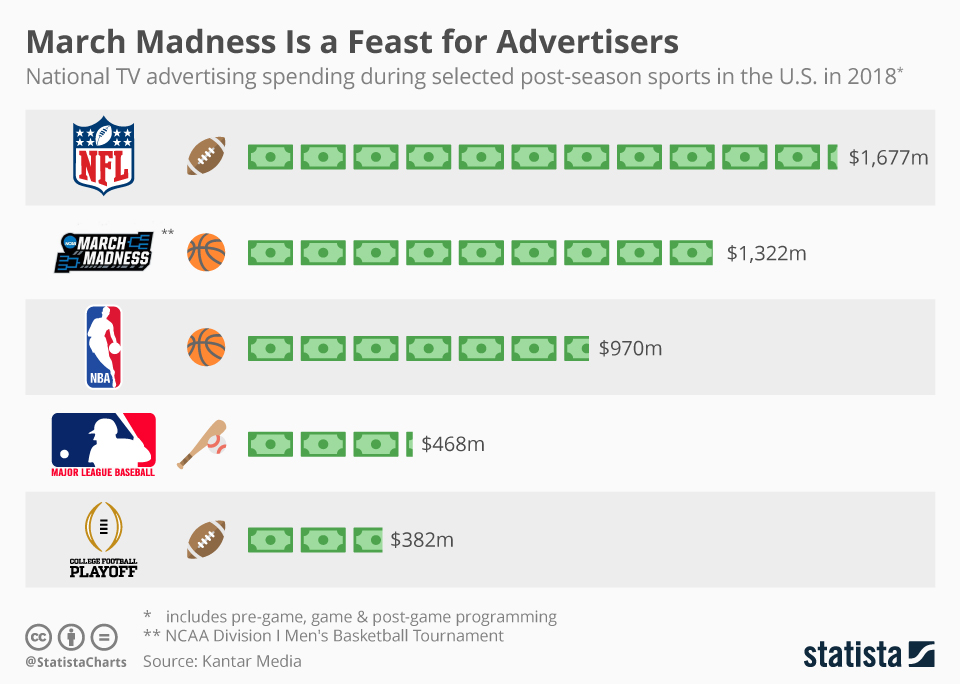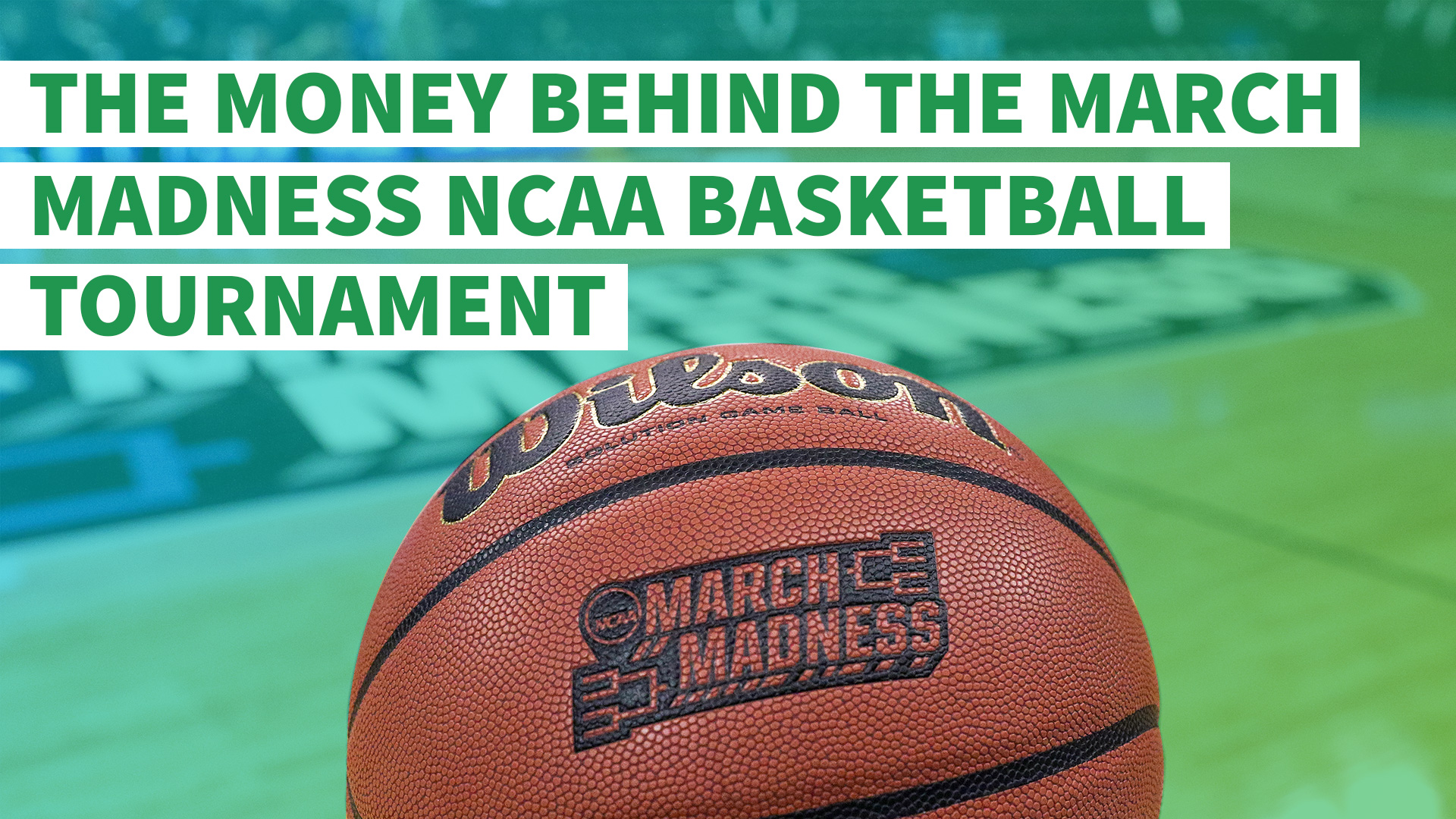March Madness 2019 is in full swing. The NCAA’s cash cow basketball tournament started on March 19th and is slated to make billions in revenue. The NCAA tournament has college basketball fans abuzz about who will be this year’s victor. In the midst of all of the excitement, the NCAA continues to face well-deserved criticism for its exploitive college athletics system. Even famed sports broadcaster Dick Vitale weighed in and stated that he believes that it is time that college basketball players get paid. Well-respected industry leaders addressing the injustices of college basketball’s premier event leads one to seriously question just how much money is at stake in March Madness?
March Madness is the NCAA’s Cash Cow
2017 was a monumental year for the NCAA. It was the first year the NCAA cleared one billion dollars in revenue. That is right the NCAA, a non-profit organization, cleared one billion dollars in revenue. Where on Earth did all of that money come from?

The Bulk of the Money Comes From Marketing and Television Rights for March Madness and a few Other Sources
A huge chunk of the NCAA’s revenue comes from its broadcasting deal for March Madness. In 2016, the NCAA extended their contract with CBS Sports and Turner, a division of Time Warner, for the broadcasting rights of the Men’s March Madness basketball tournament. The extension, which runs through 2032, added 8 years and 8.8 billion dollars to the original contract. Essentially, the new deal will pay an average of 1.1 billion dollars per season.
As a result of the contract extension, the NCAA made $817,517,801 from television and marketing rights fees in 2017. Also in 2017, the NCAA made $128,113,594 from ticket sales, concessions, parking, and other tournaments such as the National Invitational Tournament (NIT). The average price paid for tickets in 2018 was $1,845 for the full Final Four experience and a mere $1,010 for the championship game only.
From these numbers, it should be clear why Dick Vitale and college athlete rights advocates contend revenue generating athletes should be paid. Clearly, there is enough money. Without the athletes, the NCAA would not have a product to negotiate a deal like the one with CBS Sports and Turner. Fans tune in to see the best of the best compete. That very fact is what gave the NCAA the leverage for that billion dollar deal.

The NCAA is not the Only Beneficiaries – Colleges, Conferences, and Coaches Benefit too
The Big Payday for Colleges and Conferences
After the net is cut and the trophy is presented, colleges and their respective conferences await a big payday. A portion of the March Madness revenue is paid out to the colleges and conferences. Colleges use the money for a variety of things, including scholarships and funding for non-revenue sports. Division 1 conferences get the bulk of the money. The NCAA considers a variety of factors when distributing the money. Those factors include support of non-revenue sports, performance in the tournament over six years, and the number of full-rides given to athletes.

In 2016, the Big 10 received the biggest payout at $57,540,348. The Western Coast Conference came in at number ten on the list at $8,192,085. The conferences funnel the money down to the schools. The largest payment to a school came in 2016 when Stanford University was paid $3,250,544. From these numbers, is it is clear why the debate regarding payment for revenue-generating college athletes is such a hot topic. Clearly, there is enough money.
Coaches Receive Huge Bonus Incentives
Similar to Division 1 college football coaches receiving bonuses for bowl game appearances, Division 1 college basketball coaches receive bonuses for March Madness appearances. Basketball coaches receive bonuses for merely advancing to the tournament. Some even receive a bonus for a victory in the first round of the tournament. The bonus incentive increases as the team progresses to each level of the tournament. The levels include the Sweet Sixteen, Elite Eight, and the Final Four.
If Arizona State’s head coach Bobby Hurley won the 2018 title, he would have received up to $1.4 million in bonuses above his base salary. The simple fact that $1.4 million in bonuses could have been paid to Hurley for coaching a winning team totally disproves the argument that there is not enough money floating around to pay the athletes. Clearly, there is enough money.
March Madness is Big Business for Everyone Except the Athletes
It appears that everyone, expect the labor force is able to profit from March Madness. Everyone from the NCAA down to the locales where the games are held rake in millions of dollars from the tournament. Even the least watched games will generate millions of dollars for their universities. However, the players will be limited to their scholarship. For the next few weeks, fans will be bombarded with March Madness ads using the likeness of athletes who would be guilty of NCAA violations if they individually promoted that same image. This is March Madness, the NCAA’s billion-dollar cash cow.


